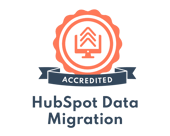Have you ever sat around with a group of inbound marketers and felt a bit lost in the conversation? All the cryptic lingo can make your head hurt.
Even if you’re somewhat familiar with marketing and lead generation, you’ve probably heard a slew of unfamiliar terms that explain different strategies, best practices, reporting metrics, and more! What does it all mean?
Don’t let terminology prevent you from achieving success with inbound marketing. Get to know these terms focused on lead generation and start adding to the conversation.
10 Key Lead Generation Terms
Lifecycle Stage
Lifecycle stages help you organize your contacts based on the stage they are at in your sales cycle. In HubSpot’s CRM, lifecycle stages include: subscriber, lead, marketing qualified lead, sales qualified lead, opportunity, customer, or evangelist.
Subscriber
Think of subscribers as those folks who know about you and have opted in to hear from you periodically. In many cases your subscriber base is the segment of your contacts database that has only signed up for your blog or newsletter and nothing else.
Lead
Leads have shown more interest in what you offer than subscribers have. Typically a lead has filled out a form with more than just an email address, often for some sort of content-based offer on your website.
Marketing Qualified Lead
Marketing qualified leads, commonly known as MQLs, are those people who have raised their hands online (so to speak) and identified themselves as more deeply engaged contacts than your usual leads, but who have not yet become fully fledged opportunities.
Sales Qualified Lead
Sales qualified leads (SQLs) are those that your sales team has accepted as worthy of a direct sales follow up. Using this stage will help your sales and marketing teams stay firmly on the same page in terms of the quality and volume of leads that you are handing over to your sales team.
Landing Page
A landing page is a website page containing a form that is used for lead generation. This page revolves around a marketing offer, such as an ebook or a webinar, and serves to capture visitor information in exchange for the valuable offer.
Conversion Rate
The number of people who complete a form on a landing page divided by the total number of people who visited the page. A low conversion rate on a landing page may indicate that the page needs to be optimized.
Offer
The content that is provided once a lead has filled out a landing page form. Examples of premium content offers include ebooks, whitepapers, webinars, videos, and templates.
Lead to Customer Rate
This is a percentage calculated by dividing the total number of customers for a given marketing channel by the total number of leads generated in that same period of time.
Call to Action
A call to action (CTA) is a text link, button, image, or some type of web link that encourages a website visitor to visit a landing page and become of lead. Some examples of CTAs are “Subscribe Now” or “Get Your Whitepaper Today.”
Inbound marketing has a lot of moving parts; we get that. Once you learn a bit of the jargon, however, you’re more apt to understand how the parts work together to generate leads.
Ready for some more terms? How about customer acquisition cost (CAC), marketing percentage of CAC, and ratio of customer lifetime value to CAC? Learn to calculate these key metrics to examine the big-picture ROI of your marketing and sales efforts.
Share this
You May Also Like
These Related Stories

10 Best Practices to Build a Successful Lead Score Model

How to Improve Lead Quality & Attract The Projects You Want


/Accreditations/CRM-Implementation-Accredited-Badges.png?width=170&height=138&name=CRM-Implementation-Accredited-Badges.png)
/Accreditations/Onboarding-Accredited-Badges.png?width=170&height=137&name=Onboarding-Accredited-Badges.png)
/Accreditations/Custom-Integration-Accredited-Badges.png?width=170&height=137&name=Custom-Integration-Accredited-Badges.png)

